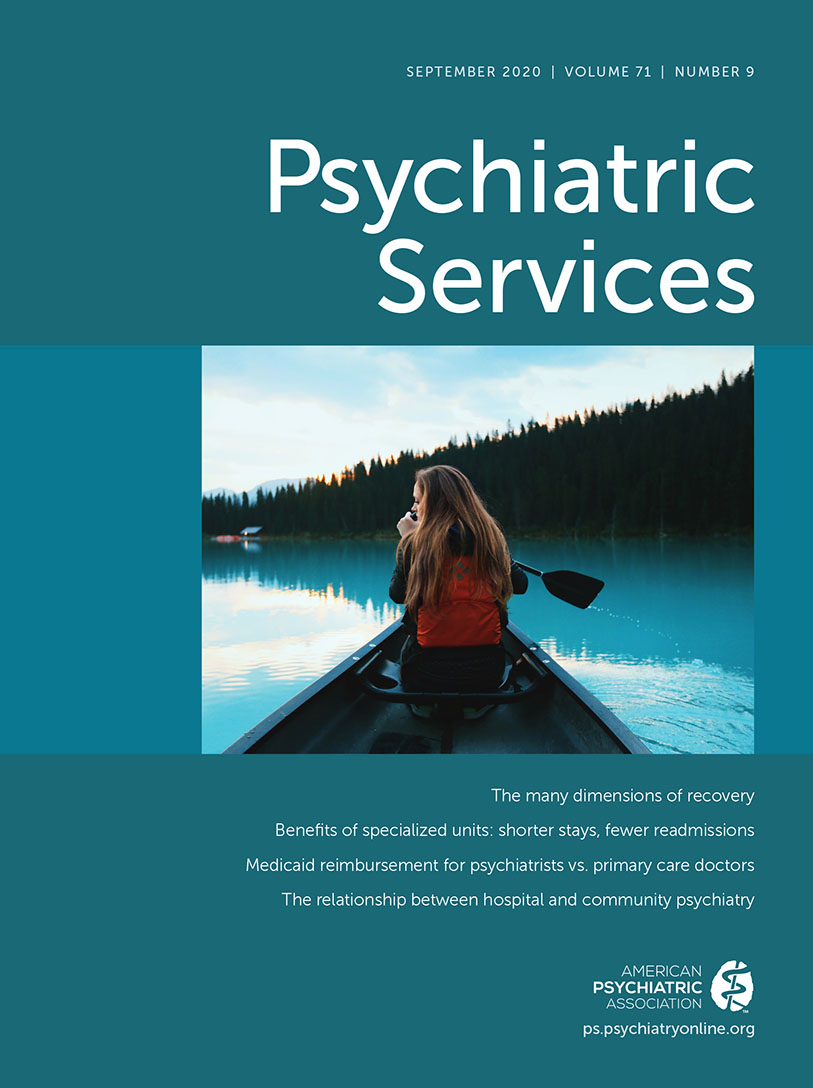Increases in Providers With Buprenorphine Waivers in the United States From 2016 to 2019
In the midst of the opioid epidemic, more than 50% of the 2.1 million individuals with opioid use disorder have not received any treatment (1). Expanded access to medications to treat opioid use disorder, especially office-based treatment with buprenorphine, has the potential to significantly increase access to treatment (2).
The Drug Addiction Treatment Act of 2000 (DATA) created a program that provides waivers allowing qualified physicians to prescribe buprenorphine for opioid use disorder in an office-based setting. Until 2016, physicians could treat up to 30 patients at a time during the first year of the waiver and up to 100 patients after 1 year. In 2016, a regulatory change allowed physicians to increase their patient limit to 275 after the first year and authorized DATA waivers for nurse practitioners and physician assistants.
Little is known about recent trends in the number of DATA-waivered providers after the 2016 regulatory changes nor about their characteristics. Although research has highlighted an increase in buprenorphine prescriptions in office-based settings in recent years (3, 4), buprenorphine remains underutilized, and many patients often face difficulties in finding a provider who prescribes the treatment (1, 5).
Data for this analysis were drawn from administrative records of all DATA-waivered providers from January 2016 to July 2019 (the most recent available data), maintained by the Substance Abuse and Mental Health Services Administration (SAMHSA).
Table 1 provides characteristics of DATA-waivered providers from 2016 to 2019. The number of DATA-waivered providers more than doubled from 32,129 in 2016 to 70,020 in 2019. During the same period, approximately 44% of DATA-waivered providers chose to not be publicly listed in the SAMHSA treatment locator tool. The largest portion of DATA-waivered providers throughout the study period were physicians, but the number of nurse practitioners and physician assistants steadily increased from 2017 to 2019. Nearly 70% of all DATA-waivered providers had a 30-patient limit from 2016 to 2019, less than a quarter had a 100-patient limit, and less than 10% had a 275-patient limit.
| 2016 (N=32,129) | 2017 (N=38,872) | 2018 (N=56,403) | 2019 (N=70,020) | |||||
|---|---|---|---|---|---|---|---|---|
| Characteristic | N | % | N | % | N | % | N | % |
| Public listing status | ||||||||
| Not public | 14,289 | 44.5 | 17,183 | 44.2 | 24,282 | 43.1 | 30,468 | 43.5 |
| Public | 17,840 | 55.5 | 21,689 | 55.8 | 32,121 | 56.9 | 39,552 | 56.5 |
| Provider type | ||||||||
| Physician | 32,129 | 100.0 | 36,769 | 94.6 | 46,514 | 82.5 | 54,945 | 78.5 |
| Nurse practitioner | 0 | .0 | 1,632 | 4.2 | 7,857 | 13.9 | 11,901 | 17.0 |
| Physician assistant | 0 | .0 | 471 | 1.2 | 2,032 | 3.6 | 3,174 | 4.5 |
| Patient limit | ||||||||
| 30 | 21,703 | 67.5 | 26,768 | 68.9 | 40,835 | 72.4 | 52,215 | 74.5 |
| 100 | 10,426 | 32.5 | 8,799 | 22.6 | 11,026 | 19.5 | 12,735 | 8.2 |
| 275 | 0 | 0 | 3,305 | 8.5 | 4,542 | 8.1 | 5,070 | 7.2 |
TABLE 1. Characteristics of DATA-waivered buprenorphine providers, 2016–2019a
The analysis showed that, while the number of DATA-waivered providers more than doubled since regulatory changes were implemented in 2016, a substantial proportion of providers opted to not be publicly listed in the practitioner locator tool. This finding highlights a major challenge in opioid use disorder treatment access, especially when publicly listed providers are not accepting new patients (2).
1 : Behavioral health treatment utilization among individuals with co-occurring opioid use disorder and mental illness: evidence from a national survey. J Subst Abuse Treat 2019; 98:47–52Crossref, Medline, Google Scholar
2 : Availability of buprenorphine treatment in the 10 states with the highest drug overdose death rates in the United States. J Psychiatr Pract 2020; 26:17–22Medline, Google Scholar
3 : Trends in buprenorphine prescribing by physician specialty. Health Aff 2019; 38:24–28Crossref, Google Scholar
4 : US trends in the supply of providers with a waiver to prescribe buprenorphine for opioid use disorder in 2016 and 2018. Drug Alcohol Depend 2019; 204:107527Crossref, Medline, Google Scholar
5 : Public Listing Status of DATA-Waivered Providers. ASPE Data Brief. Washington, DC, US Department of Health and Human Services, Office of the Assistant Secretary for Planning and Evaluation, 2019Google Scholar



